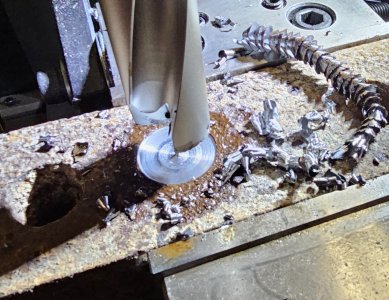Tom Kitta
Ultra Member
Sorry guys, this is one time when things got messed up by thread hijacking. I can not find where I posted about the carbide INSERT DRILL I bought.
I did end up using a brazed carbide boring bar to open the hole in the drawbar after drilling with a regular Carbide drill AT HIGH PRESSURE LOW SPEED. Even the boring bar was used with high pressure and low speed. It might not be recommended practice but it worked! Now I want to know why. That's the engineer in me, not the farm equipment repair guy.
The drawbar is done.
After completing the bar, this thread became about exploring the high pressure low speed aspects of Coles method - not about Coles method. From here on you can call it the Susquatch Method cuz it isn't Coles anymore. @mbonds comments earlier about how dissimilar metals relate to forgings were my inspiration.
There is no doubt that an unconventional method worked. The bar is done and in service performing as hoped.
So I bought one of these carbide insert drills.
View attachment 47653
This is NOT a boring bar. It is a DRILL! Note that one ENTIRE EDGE of both inserts cut!
I'm going to try it on the left over stub of the drawbar using high pressure low speed. Might shatter it, might work. Gunna find out!
I have like 50 of these. Have not really figured out how to use them - need to see some videos. part of the problem is that shank is not MT and sometimes huge.

